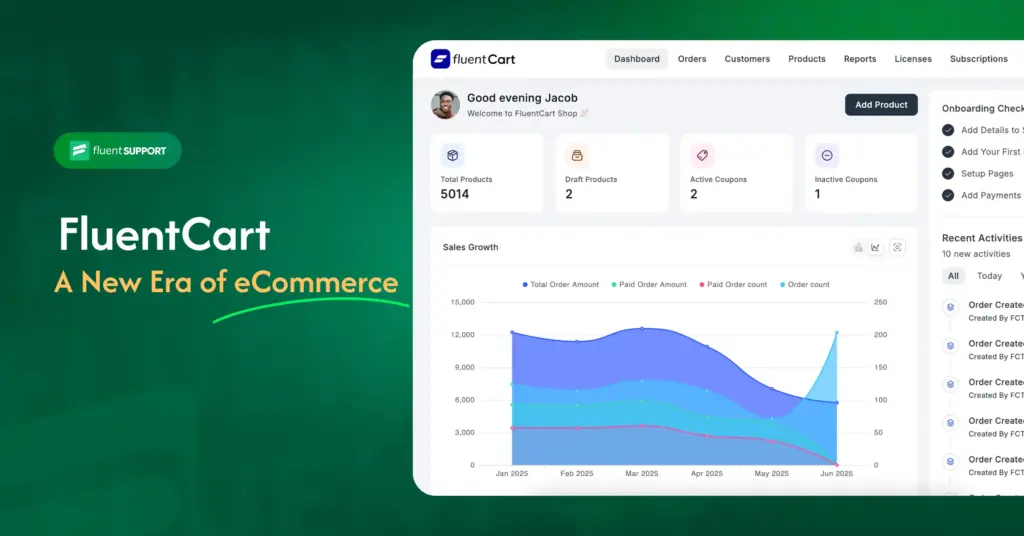
7 Ways to Make Most of Your Customer Support Data Effectively
Customer data is the single most valuable thing to a business. Customer support data is one of the types every business should consider collecting, analyzing, and learning from it.
Your support team knows about your customer better than anyone. They are in touch with your frustrated customers daily; they know their pain points and how they react to your products or services. They have a more significant impact beyond support. This knowledge is valuable for your business operation, such as marketing, re-targeting, and improving your products.
When used in a proper way, customer support data can help your company achieve unbelievable customer happiness metrics and gain a new customer market.
But what is customer support data and how can you make the most of your customer support data? In this post, we will explore seven ways to make most of your customer support data effectively.
What is customer support data?
Everything related to customers and how they use your products or services collected through your business’s support team is customer support data.
This data includes your customer information, their interest, what they are buying, what their problems are, and much more.
Customer support data can be differentiated into many types. Businesses can collect customer information based on metrics like customer happiness, support ticket data, user churn risk & reason behind it, and customer satisfaction.
You can analyze and research the collected data for robust re-targeting, offer related customer service, and a better marketing plan. Customer support data can help businesses create new strategies to strengthen their marketing and support goals. You can use this data to predict your customer’s future actions and set your re-targeting process to get a positive result.
How to collect customer support data?
Collecting your customer support data is super important from day one. Businesses must have a process to collect the correct information using the right tools.
The best way to collect customer support data is to have super responsive and feature-rich helpdesk software. Most of the support ticket solutions have built-in data-collecting features nowadays. Using tags, automation, and custom priorities, you can collect different types of information about your customers in a support system like Fluent Support or Awesome Support.
You can use your knowledge base to determine which topics are most searched and the main reason for new tickets. You can also research online reviews to learn about customers’ pain points and run surveys to determine customer satisfaction.
Tools like Google Analytics, Kissmatrics, and Heatmaps are some business intelligence tools widely used to collect customer data. You can implement these tools to get deep customer support data for future use.
How to make the most of customer support data
Customer support data is gold when you put that into action. It would be best to use customer service analytics to evaluate your support team’s performance and identify problems to solve them immediately. You can use this information in other ways too. Here are 7 ways you can make the most of your business’s customer support data-
1. Know your customers
Enough customer support data can help you identify your ideal customers. If you know your customer’s demographics, you can adequately segment them. It can help you connect to the right customers when necessary. You can also create a suitable marketing funnel for your specific customers or re-target a particular group.
Customer experience data will help you understand your demographic behavior. You can use that understanding to apply the right tone and training to your support team. So they can improve themselves, give better support experience to customers and boost customer satisfaction.
Collect customer support data from your support team and ask them these questions to identify your demographics-
- How are customers connecting with support?
- What is their pain point?
- What products are they buying? Are they buying other products?
- How are customers behaving from one product to another?
- Is there any churn rate?
- How many customers leave after checkout?
- What is the behavior of customers while in the refund process?
- What is the problem customer trying to solve with your products?
You can ask many questions you can ask your industry. Choose wisely. Collect data on your intention to use the data for analyzing present and future customers. You can use this information to provide feedback to your first buyer. You can collect how they react and use that to create onboarding messages, email campaigns, and help documentation for users.
2. Follow the right metrics
Choosing the right metrics while collecting data is the most crucial step. When you are collecting data, follow the right metrics. This will help you focus on specific topics and tools you should use.
Try to figure out the customer’s first touchpoint with your support. How are they behaving with your support? Are they getting the right answer when connecting with your support team? Most of the time, customers’ first contact with support determines their relationship with your brand long-term. When they get immediate solutions for their problem from your support or even satisfaction, it leaves a positive image on them about your products. These customers are most likely to buy again or tell their friends & family about your brand.
The second metric you should follow is how they are satisfied with your customer support team. Try to figure out this question. The answer will tell you a lot. You can use this data to figure out how to evolve the support team or how much you need to invest in support.
The third metric is how likely your customers will refer your business to others. This data will help you analyze customer retention and determine what your brands lack in terms of customer needs.
You should also consider other metrics like time to first response, average handle time, resolved cases, etc. But always follow the mentioned three metrics first.
3. Review team performance
When collecting and analyzing customer support data, you should consider reviewing your support team’s overall performance. Because everything depends on the connection between your support agents and customers.
Put the right people on your team. Try to avoid all kinds of bad customer service. Train your people to handle your customer with empathy.
Keep in mind while reviewing your support team-
- How are they communicating while engaging with users?
- What are the waiting time data on average tickets?
- What are the average closed tickets by individual agents?
- How do customers react after refund requests?
- How many tickets closed at first touchpoints?
You should review performance weekly, monthly, and quarterly to ensure quality support data. Use your support data to get an overall look into your support team’s performance. Your collected data will be worthless and not actionable without a good support team.
4. Define business goal
Using customer support data, a business can define its goal for the long term. When it comes to business goals, all things are defined by revenue and cost.
To run a business, the main goal is to increase revenue and decrease costs. You can use support data to know what is costing you money or what you need to improve to increase revenue per customer.
Every business should have a clear data strategy. Data strategy means how your business uses data to implement proper processes toward fulfilling its business goal.
Analyze customer support data about your product or services; if one feature is costing you more customers, you should focus on improving the feature and benefits to improve customer satisfaction, thus increasing customer retention. The proper use of customer support data will risk going in the wrong direction—or stalling out completely—if you don’t have a solution for using data to guide your decisions and actions.
5. Evaluate data tracking
Data tracking is hard work when you are tracking lots of data. Sometimes businesses lose track of data because often they collect so much event data that they don’t know where to start. That’s why you should have a clear answer on how and why you are tracking and using your data.
Constantly evaluate your data tracking. If you are unsure where to start, try finding your immediate questions answers. What data do you need to track these answers? You will then know how to start the right process.
Use tools (Google Analytics, Kissmatrics, etc.) to track your events and goals, name them properly for future use. Analyze and evaluate overall progress to determine which needs your immediate attention.
6. Store data for future
Businesses should start planning to store data privately from their start. In the early stage, free analytics tools will do the work, but as the business grows, it is will helpful for the future to company invest in data storing and analysis.
Nowadays, it is easier to store data. As a business, you should always think ahead. In this era, data is like a goldmine. It is far more valuable than money to businesses sometimes. Data is useful when you make it easy to access your team. It is only possible in your own dashboard.
You can make charts, diagrams, and information with metrics visualized into a dashboard accessible to everyone in your company. Storing your data on your own and making it easy to find for everyone will make your data more valuable. It will help them make the right decision backed by actual customer data.
7. Use support data on marketing
Your all customer is not here to stay forever. You will lose users every day. But with customer support data, you can analyze metrics like customer satisfaction and support ticket data to find out the customer churn rate. You can use that information to improve your marketing funnel to re-target those customers repeatedly.
Support data can be helpful in marketing to target new users. Because you already know about your existing customers, you know about their age, what they like, their pain points, and their problems through your support data. Use that data to target the same demographics and personalized marketing materials for better conversion.
You can use support data to provide content based on users’ first purchases and keep up good retention. Apply that to a follow-up email, checkout text, or message too. Your knowledge of support data can help your marketing team gain engagement, and retention, decrease customer churn rate and increase back-to-back product sales.
Conclusion
Customer support data is one of the most valuable data types you can use in your business growth. Not only is it helpful to increase profits and customer retention, but customer support data can also give you ideas on how to make your products or services more effective. In some cases, it will lead to new product or service ideas.
Businesses can identify their support representatives’ performance and customers’ needs by using customer service analytics. They can utilize these data for marketing or content to retain old and gain new customers.
You should not just store customer support data. You can follow any of the above methods to use support data wisely in your business and keep your team productive all the time.
Your own Support Portal in 5 minutes!
Start off with a powerful ticketing system that delivers smooth collaboration with unlimited features and integrations.












Leave a Reply